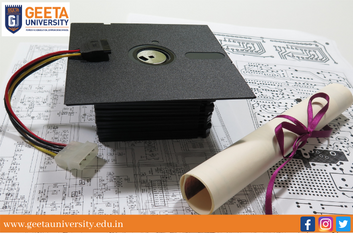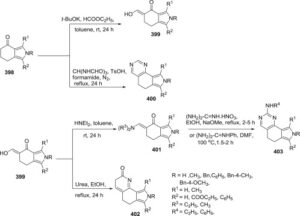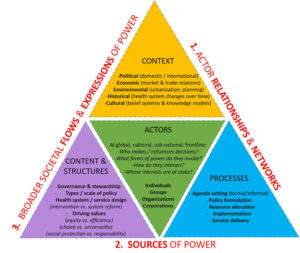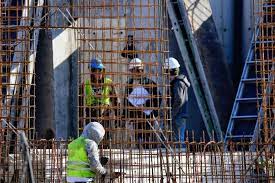BUILDING A SUSTAINABLE FUTURE WITH BACTERIAL CONCRETE
Uncategorized
Introduction:
In the quest for sustainable construction materials, scientists and engineers are constantly exploring innovative solutions to address the challenges of environmental degradation and resource depletion. One such groundbreaking innovation is bacterial concrete, also known as self-healing concrete. This remarkable material has the potential to revolutionize the construction industry by enhancing the durability and longevity of concrete structures while minimizing maintenance and repair costs. In this blog, we will delve into the fascinating world of bacterial concrete, exploring its mechanism, benefits, applications, and the future of sustainable construction.
Understanding Bacterial Concrete:
Bacterial concrete is a type of bio-concrete that incorporates specific types of bacteria into the concrete mix. These bacteria, typically of the genus Bacillus, are capable of remaining dormant within the concrete until cracks or damage occur. When water infiltrates the concrete and reaches the bacteria, it activates them, triggering a biological process known as calcite precipitation. During this process, the bacteria metabolize calcium lactate, a nutrient source added to the concrete mix, and produce calcite, a mineral that fills the cracks and restores the concrete’s integrity. This remarkable self-healing capability sets bacterial concrete apart from traditional concrete and offers a sustainable solution to the problem of concrete deterioration.
Benefits of Bacterial Concrete:
The utilization of bacterial concrete offers numerous benefits for the construction industry and the environment:
1.Enhanced Durability: Bacterial concrete significantly improves the durability and lifespan of concrete structures by autonomously repairing cracks and damage, thereby reducing the need for frequent maintenance and repair interventions.
2.Cost Savings: By minimizing the need for manual repairs and maintenance, bacterial concrete helps save costs associated with labor, materials, and downtime, making it a cost-effective solution in the long run.
3.Environmental Sustainability: Bacterial concrete promotes environmental sustainability by reducing the carbon footprint associated with concrete production and maintenance. Its self-healing properties also contribute to the preservation of natural resources by extending the lifespan of concrete structures.
4.Resilience: Bacterial concrete enhances the resilience of concrete structures against environmental factors such as freeze-thaw cycles, chemical exposure, and mechanical damage, ensuring their long-term performance and reliability.
Applications of Bacterial Concrete:
Bacterial concrete, also known as self-healing concrete, offers a wide range of applications across various sectors of the construction industry due to its unique properties and capabilities. Below are detailed applications of bacterial concrete:
1. Infrastructure Projects:
• Bridges and Highways: Bacterial concrete is well-suited for bridges and highways, where durability and minimal maintenance are essential. Cracks in bridge structures can lead to corrosion of reinforcement and structural deterioration. Bacterial concrete’s self-healing properties help prevent further damage, ensuring the longevity and safety of these critical infrastructure components.
• Tunnels: Underground tunnels are susceptible to cracking due to factors such as ground movement and water infiltration. Bacterial concrete can be used in tunnel construction to mitigate the effects of cracks and enhance structural integrity, reducing maintenance needs and ensuring the safety of transportation networks.
2. Marine Structures:
• Seawalls and Harbors: Coastal structures such as seawalls and harbors are constantly exposed to corrosive seawater, leading to degradation and structural damage over time. Bacterial concrete’s resistance to chemical corrosion and its ability to self-heal cracks make it an ideal choice for marine infrastructure projects, ensuring long-term durability and protection against erosion.
• Offshore Platforms: Offshore platforms face challenging environmental conditions, including exposure to saltwater, waves, and marine life. Bacterial concrete can be used in the construction of offshore platforms to enhance structural resilience and reduce maintenance requirements, thus ensuring the safety and reliability of offshore oil and gas operations.
3. Underground Construction:
• Sewage Systems: Sewage systems and wastewater treatment facilities are critical components of urban infrastructure. Bacterial concrete’s resistance to chemical corrosion and its self-healing properties make it suitable for use in sewage pipes and structures, reducing the risk of leaks and structural failures.
• Subway Systems: Subway tunnels and underground transit systems are subject to heavy loads and vibrations, leading to the formation of cracks over time. Bacterial concrete can be employed in subway construction to repair and prevent cracks, ensuring the safety and reliability of public transportation networks.
4. Architectural Applications:
• Facade Panels: Bacterial concrete can be used in the construction of facade panels for commercial and residential buildings. Its self-healing properties help maintain the aesthetic appearance of the facade by minimizing the visibility of cracks and reducing the need for surface repairs.
• Pavements and Walkways: Bacterial concrete can be utilized in the construction of pavements, walkways, and other outdoor surfaces. Its ability to self-heal cracks caused by environmental factors such as temperature fluctuations and heavy traffic ensures the durability and longevity of outdoor structures.
5. Repair and Retrofitting:
• Existing Concrete Structures: Bacterial concrete can be used for repairing and retrofitting existing concrete structures, extending their service life and reducing maintenance costs. By filling and sealing existing cracks, bacterial concrete helps restore the structural integrity of aging infrastructure without the need for costly and disruptive repair methods.
6. Green Building Projects:
• LEED-Certified Buildings: Bacterial concrete aligns with the principles of sustainable construction and can contribute to the achievement of Leadership in Energy and Environmental Design (LEED) certification for green building projects. Its durability, low maintenance requirements, and potential for reducing material waste make it an environmentally friendly choice for sustainable construction initiatives.
Bacterial concrete offers a wide range of applications across various sectors of the construction industry, from infrastructure projects to architectural applications and repair and retrofitting projects. Its unique properties, including self-healing capabilities and resistance to environmental factors, make it an attractive choice for enhancing the durability, safety, and sustainability of concrete structures. As research and development in this field continue to advance, the applications of bacterial concrete are expected to expand, paving the way for more resilient and environmentally friendly construction practices.
Case Studies and Research:
Case studies and research initiatives play a crucial role in advancing the understanding and application of bacterial concrete in the construction industry. These studies provide valuable insights into the performance, effectiveness, and potential applications of bacterial concrete in various real-world scenarios. Below are detailed case studies and research initiatives that have contributed to the development and adoption of bacterial concrete:
1. The Netherlands’ “Healing Agent” Project:
• Background: The “Healing Agent” project, conducted in the Netherlands, aimed to assess the effectiveness of bacterial concrete in repairing cracks in concrete structures, particularly in marine environments.
• Methodology: Researchers embedded bacterial concrete in a seawall structure located in a coastal area prone to erosion and saltwater exposure. The concrete was monitored over a specified period to evaluate its self-healing capabilities in response to environmental stressors.
• Findings: The study demonstrated the effectiveness of bacterial concrete in repairing cracks caused by environmental factors such as seawater exposure and freeze-thaw cycles. The self-healing properties of the concrete helped maintain the structural integrity of the seawall, reducing the need for frequent maintenance and repair interventions.
• Impact: The success of the “Healing Agent” project highlighted the potential of bacterial concrete as a sustainable solution for marine infrastructure projects, prompting further research and adoption of the technology in coastal protection and offshore structures worldwide.
2. University Research Initiatives:
• Delft University of Technology (TU Delft), Netherlands: Researchers at TU Delft have conducted extensive studies on bacterial concrete, focusing on optimizing bacterial strains, nutrient delivery mechanisms, and environmental conditions to enhance crack-healing efficiency. Their research has contributed to the development of advanced bacterial concrete mixes with improved self-healing capabilities and long-term performance.
• University of Bath, United Kingdom: Scientists at the University of Bath have investigated the use of bacterial concrete in sustainable construction applications, including the development of bio-cementation techniques for soil stabilization and erosion control. Their research has explored innovative ways to harness bacterial activity for enhancing the durability and resilience of civil engineering structures.
3. Commercial Applications and Case Studies:
• Bacteria-based Self-Healing Concrete Products: Several companies have developed commercial products based on bacterial concrete technology, offering self-healing concrete mixes and repair systems for infrastructure projects. Case studies documenting the application of these products in real-world construction projects showcase their effectiveness in enhancing the durability and longevity of concrete structures.
• Case Study: Self-Healing Concrete in Parking Structures: A case study conducted in a parking structure in a major urban area demonstrated the application of self-healing concrete to repair cracks caused by vehicle traffic and environmental exposure. The use of bacterial concrete helped extend the service life of the parking structure and reduce maintenance costs, making it a cost-effective solution for urban infrastructure maintenance.
4. Field Trials and Performance Monitoring:
• Long-Term Performance Monitoring: Researchers and industry practitioners conduct field trials and long-term performance monitoring of bacterial concrete in various construction projects to assess its durability, resilience, and cost-effectiveness over time. These monitoring programs provide valuable data on the real-world performance of bacterial concrete under different environmental conditions and loading scenarios, informing future design and construction practices.
Case studies and research initiatives have played a significant role in advancing the understanding and adoption of bacterial concrete in the construction industry. From academic research to commercial applications and field trials, these studies have demonstrated the effectiveness, durability, and potential applications of bacterial concrete in enhancing the sustainability and resilience of concrete structures. As research and development efforts continue, bacterial concrete is expected to play an increasingly important role in sustainable construction practices worldwide.
Challenges and Future Directions
Challenges and future directions in the field of bacterial concrete are crucial aspects to consider for its continued development and widespread adoption in the construction industry. While bacterial concrete offers promising benefits, it also faces several challenges that need to be addressed, and there are opportunities for further research and innovation to overcome these challenges. Below are detailed challenges and future directions in the field of bacterial concrete:
Challenges:
1.Effectiveness in Repairing Large Cracks:
• One of the primary challenges of bacterial concrete is its effectiveness in repairing large or extensive cracks. Current formulations may be limited in their ability to effectively heal cracks beyond a certain size.
• Large cracks pose a significant structural integrity risk and may require alternative repair methods such as external reinforcement or replacement of affected concrete sections.
2.Cost Considerations:
• Incorporating bacteria and specialized materials into concrete mixes can increase production costs, making bacterial concrete more expensive than conventional concrete.
• Cost-effectiveness analyses are needed to assess the long-term benefits of bacterial concrete, including reduced maintenance and repair costs, compared to upfront production costs.
3.Long-Term Performance and Durability:
• Ensuring the long-term performance and durability of bacterial concrete under various environmental conditions remains a key challenge.
• Factors such as temperature fluctuations, exposure to chemicals, and mechanical loads can affect the effectiveness of bacterial concrete in repairing cracks and maintaining structural integrity over time.
4.Standardization and Quality Control:
• Standardization of bacterial concrete production processes and quality control measures is essential to ensure consistency and reliability in performance.
• Developing industry standards and guidelines for the production, testing, and application of bacterial concrete will facilitate its widespread adoption and acceptance in construction projects.
5.Environmental Considerations:
• Environmental considerations, such as the ecological impact of introducing bacteria into the environment and the sustainability of bacterial concrete production processes, need to be carefully evaluated.
• Research is needed to assess the environmental footprint of bacterial concrete and identify ways to minimize its impact on ecosystems and natural resources.
Future Directions:
1.Optimization of Bacterial Strains and Mix Designs:
• Continued research is needed to optimize bacterial strains and mix designs to enhance the crack-healing efficiency and overall performance of bacterial concrete.
• Selecting bacteria with superior calcite-producing abilities and optimizing nutrient delivery mechanisms will improve the self-healing properties of bacterial concrete.
2.Advanced Materials and Technologies:
• Advancements in materials science and nanotechnology offer opportunities to develop advanced bacterial concrete formulations with enhanced properties, such as increased strength, durability, and self-healing capabilities.
• Incorporating nanomaterials, such as nanoparticles and nanofibers, into bacterial concrete matrices can improve crack-sealing efficiency and enhance resistance to environmental stressors.
3.Integration of Bacterial Concrete into Building Codes:
• Collaborative efforts between industry stakeholders, researchers, and regulatory agencies are needed to integrate bacterial concrete into building codes and standards.
• Developing guidelines for the design, construction, and maintenance of bacterial concrete structures will promote its acceptance and adoption in construction projects.
4.Field Trials and Performance Monitoring:
• Conducting field trials and long-term performance monitoring of bacterial concrete in real-world construction projects is essential to assess its durability, resilience, and cost-effectiveness.
• Longitudinal studies will provide valuable data on the behavior of bacterial concrete under different environmental conditions and loading scenarios, informing future design and construction practices.
5.Sustainability and Environmental Impact:
• Research efforts should focus on improving the sustainability of bacterial concrete production processes and minimizing its environmental impact.
• Exploring eco-friendly alternatives for nutrient sources and optimizing production methods to reduce energy consumption and greenhouse gas emissions will enhance the sustainability of bacterial concrete.
In conclusion, addressing the challenges and exploring future directions outlined above will be instrumental in advancing the field of bacterial concrete and unlocking its full potential in the construction industry. Through collaborative research, innovation, and strategic partnerships, bacterial concrete can become a sustainable and resilient building material that contributes to the development of more durable and environmentally friendly infrastructure worldwide.
Conclusion:
Bacterial concrete holds tremendous promise as a sustainable construction material that can significantly enhance the durability, resilience, and environmental sustainability of concrete structures. By harnessing the power of nature, we can build a more sustainable future while meeting the growing demands of urbanization and infrastructure development. With ongoing research and collaboration, bacterial concrete has the potential to revolutionize the construction industry and pave the way for a greener, more resilient built environment.
In conclusion, bacterial concrete represents a groundbreaking innovation that aligns with the principles of sustainability and resilience, offering a viable solution to the challenges facing the construction industry. As we continue to explore and refine this remarkable material, we can look forward to a future where our built environment is not only durable and reliable but also environmentally sustainable and socially responsible.

Feba thomas
Related Posts

Navigating Internships and Job Search Success – Geeta University
Navigating Internships and Job Search Success – Geeta University Transitioning from the classroom to the professional world can be an exciting but challenging journey for university students. Securing internships and finding job opportunities that align with your career goals requires

A Medicinal Active Moiety: 3,4,5-TRIMETHOXYBENZOIC ACID DERIVATIVES
A Medicinal Active Moiety: 3,4,5-TRIMETHOXYBENZOIC ACID DERIVATIVES INTRODUCTION Pharmaceutical chemistry is a branch of Pharmacy which deals with the biology and chemistry. The general laws of this branch helps us to study the drugs. Study of drugs include its structure,

Power of Research
Power of Research Research is a systematic process of development and assessment of all the findings Research is a process to discover new knowledge to find answers to a question as it conducts experiments or observations and also records data



